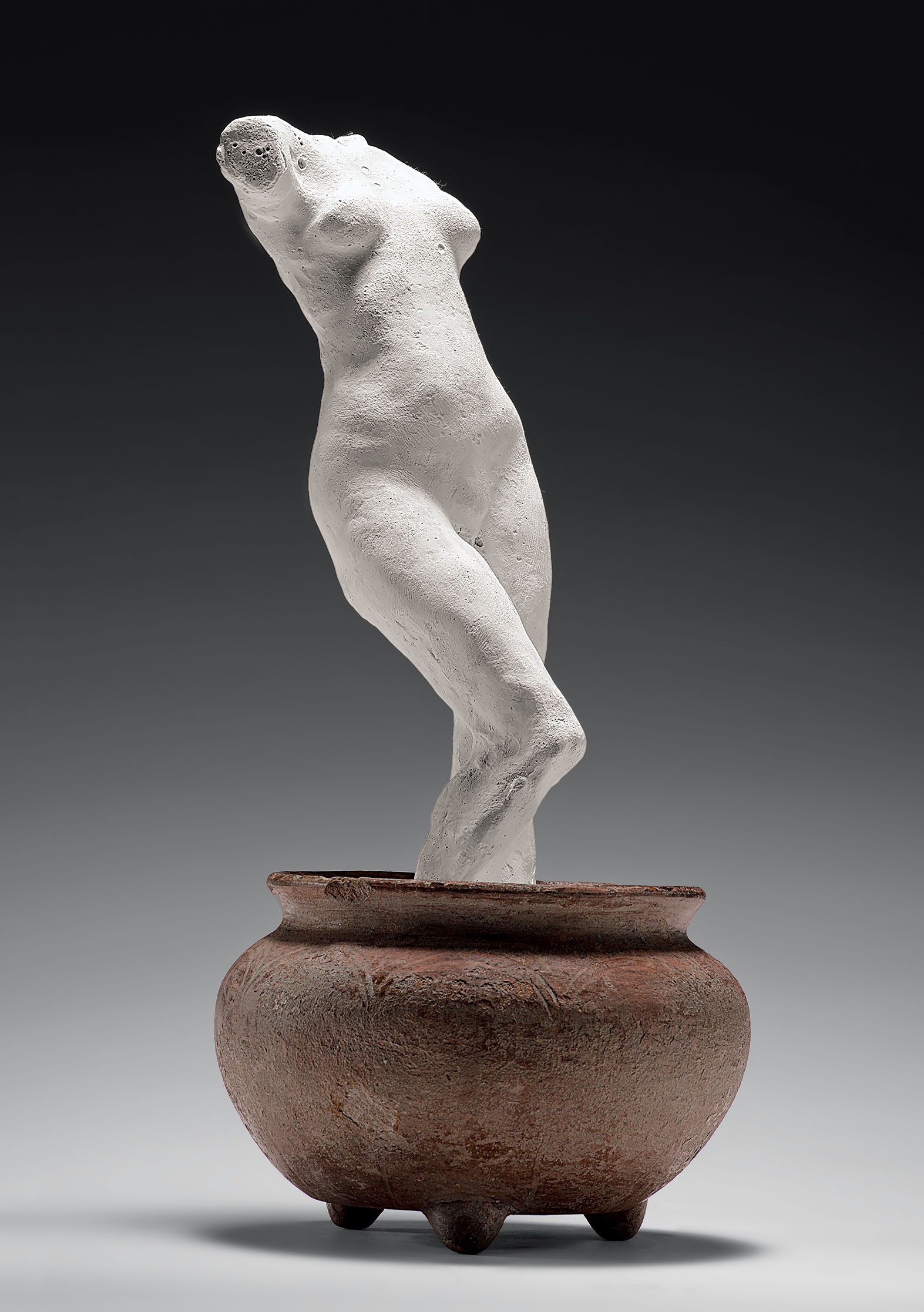MMFA’s Metamorphoses: In Rodin’s Studio is the largest exhibition of Rodin ever presented in Canada
The first thing you should notice about this exhibit—before you even start planning your weekend-cultural crawl—is the odd spelling of ‘metamorphosis.’ Those who didn’t notice are recommended to get their reading on fleek, so they can appreciate how it isn’t a typo, but in fact lends its name to this famous late 19th – early 20th century French sculptor’s exhibit.
While ‘metamorphosis’ refers to a series of changes or a transformation, Metamorphoses is the greatest body of work by the Roman poet Ovid. In short, it’s a collection of myths in the form of narrative poetry. One of the more famous myths in this collection is that of Pygmalion and Galatea, in which Pygmalion sculpts his ideal woman out of ivory and wishes her into existence—it would also eventually inspire My Fair Lady, starring Audrey Hepburn. Given this background information, it isn’t hard to understand why and how the title Metamorphoses: In Rodin’s Studio is well-suited to the collection of clay, plaster, marble, and bronze nudes, forms, and figures currently on display at the Montreal Museum of Fine Arts (MMFA).
Upon entering, the viewer is introduced to an array of hands bearing titles such as “The Hand of God,” “The Hand of the Devil,” and even a mold of Rodin’s own hand. The myth of creation is a clear theme both in this room and throughout the exhibit. Some believe that God created man from dust and it could be said that Rodin did the same using not-so-different materials. Rodin went from creation to creator, bringing his own forms to life.
As one ventures through the rest of the exhibit, a reference back to the original meaning of metamorphosis is seen as the sculptures progress from plaster, to clay, to bronze and marble. Oftentimes, the same sculpture is repeated two or three times in different mediums. Rodin achieved this through his use of molds, which he used to recast the same forms and figures over and over again. Rodin was also known for breaking a limb off of one sculpture and adding it to another—thus transforming it. This process is a technique called “assemblage” and can be seen in works including “I Am Beautiful,” in which Rodin combines “Crouching Woman” with an Atlas-like male figure. Rather than holding the world, the Atlas-like man holds his lover in his arms while an inscription from a verse of Baudelaire’s poem Beauty reads, “Je suis belle ô mortels comme un rêve de pierre.” Assemblage was also used in “The Centauress,” in which Rodin combined the head and torso of a female nude to the body of a horse, once again alluding to myth.
With 300 works on display, there is a lot to see. However, there are three works that cannot be overlooked, for they are the essence of Rodin’s fame and legacy. They are “The Gates of Hell,” “The Walking Man,” and, of course, “The Thinker.” While “The Gates of Hell,” inspired by Dante’s Inferno, is not physically part of the exhibition, the enormous and labour-intensive work can be seen projected on a wall in actual size. Furthermore, molds of figures that comprise the original work can be seen throughout the exhibit, as in “Adam (For the Gates of Hell).”
The other two famous sculptures are in fact physically present. “The Walking Man” is a perfect example of fragmentation, when Rodin deliberately decided not to add certain limbs to a sculpture, sometimes even breaking them off. As a result, these sculptures became throwbacks to Ancient Greco-Roman sculptures that are now missing limbs due to the ravages of time rather than deliberate intent. According to a biography written by Ambroise Vollard, in a conversation with Renoir, Rodin once said that, “People have often reproached me for not putting a head on my ‘Homme qui marche.’ Does one walk with one’s head?”
Rodin is often credited as a sculptor of emotion and movement. He was known to exaggerate the size of hands and feet in order to add more intricate details, like popping veins and tense muscles. Rodin’s focus was not on respecting the right number of limbs, but on ensuring that whatever was there was overflowing with emotion. According to another biography by Frederick Lawton, in one of his letters from 1904 Rodin explained that “Here’s a hand … broken right off at the wrist, it has no fingers, nothing but a palm; but it is so true that to contemplate it, to see it live, I don’t need fingers. Mutilated as it is, it is nevertheless enough because it is true.”
The true highlight for any Rodin connoisseur is “The Thinker” perched on a stone. It is the one work that remains embedded in one’s mind as the end of the exhibit draws near.
The final rooms contain a replica of Rodin’s actual studio. Pictures line the walls and sounds of hammering and muffled talking can be heard through the speakers. After so many signs reminding viewers not to touch any of the sculptures, it is a welcomed opportunity to finally be able to do so in the last room, where viewers are allowed to touch and feel replicas of certain sculptures on display. This interactive room is designed to allow the visually-impaired a chance to experience Rodin’s art, but is an equal treat for all visitors.
A final reference to transformation and the myth of Pygmalion and Galatea from Ovid’s Metamorphoses is waiting as one exits the exhibition. Viewers are encouraged to step on a pedestal and strike a pose. This time, it is not Galatea who turns to flesh, but you who turn to stone.
Metamorphoses: In Rodin’s Studio will be on display at the Montreal Museum of Fine Arts until Oct. 18.
